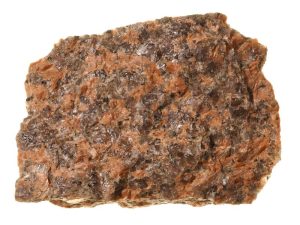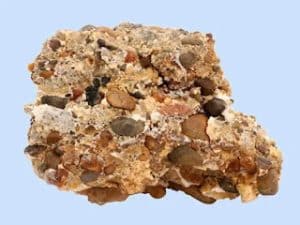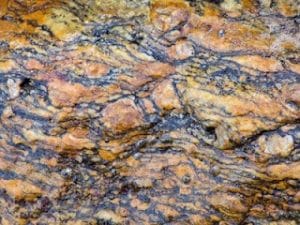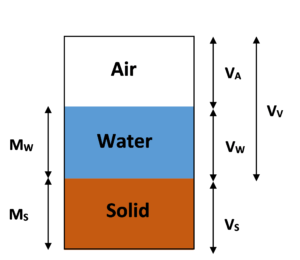Stone As A Traditional Material In Civil Engineering | Uses, Types, Examples, Classifications
Tradition construction/building materials in civil engineering include stones, bricks, lime, timber and cement.
In this post, you’ll learn the definition, types, uses and examples of stone as a traditional building/construction material in civil engineering.
Stone: Definition
Stone is a naturally available building material which has been put to use since early civilization. Stone is available in the form of rocks. Rocks are cut to required sizes and shapes and used for building and construction purposes.
Stones have been applied in small to large construction and building projects over the years in every part of the world.
Types of Stones
For civil engineering purposes, stones may be classified based on three headings viz:
- Geological
- Physical
- Chemical
Let us look at these classifications one after another:
Geological Classification of Stones
This classification of stones/rocks is based on their origin of formation. This entails that stones can be classified into three main groups which are:
- Igneous rocks
- Sedimentary rocks
- Metamorphic rocks
Igneous Rocks: They are formed by cooling and solidifying of the rock masses from their molten magmas. These rock types are durable and strong generally. Example of rocks belonging to this category include granite, basalt and trap. Granites are formed by a slow cooling of the lava under thick cover on the top. This is why they are crystalline in nature. For rocks such as basalt and trap which are cooled on the top surface of the earth, they are non-crystalline in nature.

|
| Igneous rock | img src @Google |
Based on where the molten magma solidifies, igneous rocks could be classified into 2 viz: intrusive – if the magma solidifies within the earth crust and extrusive – if the magma solidifies on the earth surface.
Igneous rocks may further be classified based on the nature of the rock texture. These textures are used by geologists to determine the mode of origin of the rocks. Based on their texture, there are six broad classifications viz: aphanitic, phaneritic, glassy, porphyritic, pyroclastic, and pegmatitic.
To learn more about the classification of igneous rocks based on their textures review this web page.
Based on their chemical composition, igneous rocks may be classified as felsic, intermediate, mafic and ultramafic. To learn more on the chemical classification of igneous rocks, visit this page.
Common examples of igneous rocks include: granite, basalt, trap, andesite, dacite, obsidian, pumice, rhyolite, tuff, scoria.
Sedimentary Rocks: These types of rocks are formed due to weathering actions of wind, water, frost and man. Existing rocks disintegrate and are carried by forces of nature such as water and wind. Water being a more powerful medium of conveyance than wind. When the flowing water encounters an obstacle, it deposits the rock particles which then consolidate under the action of heat and pressure.

|
| Sedimentary rock | Img src @britannicakids |
Chemical agents also help to solidify the rock strata. This results in the formation of a more uniformed, compact and fine grained rock, representing a stratified or bedded kind of rock. Examples of stones in this category includes sandstones, mudstones, limestones, etc.

|
| Sedimentary rocks |
Based on the source of formation, sedimentary rocks may be classified as clastic, organic, biochemical and chemical.
An example of clastic sedimentary rock is sandstone. They are formed from clasts, or pieces of other rocks. Organic sedimentary rocks, such as coal, are formed from hard, biological materials like plants, shells, and bones that are compressed into rocks.

|
| Sedimentary rocks |
Chemical sedimentary rocks like limestone, flint and shale form from chemical precipitates. A precipitate is formed when a substance dissolves in a solution. The solution evaporates leaving behind the chemical substance. Examples include calcium carbonate, salt, lime, etc.
Metamorphic Rocks: These types of rocks originate from igneous and sedimentary rocks which had been formed previously as discoursed above. Due to internal heat and pressure, igneous and sedimentary rocks undergo changes to form metamorphic rocks.

|
| Metamorphic Rock | Img src @britannica |
Examples of metamorphic rocks which forms from either an igneous or sedimentary rocks include:
Slate is formed from mud stone
Greisse is formed from granite
Schist and laterite are formed from trap and basalt
Quartzite is formed from sandstone and
Marble is formed from limestone.
Physical Classification of Rocks/Stones
Rocks may be classified based on their structures, a physical property of rocks. On this basis, they may broadly be classified as stratified and unstratified rocks.
- Stratified Rocks: These types of rocks are in layers. They have planes of stratification or cleavage along which they could be easily split. Examples include limestones, sandstones and slates.
- Unstratified Rocks: These rocks do not have a layered or stratified structure but are crystalline in nature. They are compact and cannot be split into thin slabs or layers. Examples of rocks in this category include granite, marble, trap, etc.
- Foliated Rocks: Like stratified rocks, foliated rocks have layers or strata, but with a tendency to split only along a definite direction. The direction does not have to be parallel as with stratified rocks. The foliated structure is a common phenomenon of metamorphic rocks.
Chemical Classification of Rocks/Stones
Based on their chemical constituents, rocks may be classified as:
Siliceous, Argillaceous and Calcareous rocks.
Siliceous Rocks have silica as their main constituent. These rocks are durable and hard. Examples include granite, sandstone, trap.
Argillaceous Rocks are formed from clay as their main constituent. They are also durable and hard, but brittle. They cannot withstand shock. Examples of rocks in this category include laterite, and slate.
Calcareous Rocks have calcium carbonate (CaCO3) as their main constituent. Marble is a calcareous rock of metamorphic origin and limestone is a calcareous rock of sedimentary origin.



